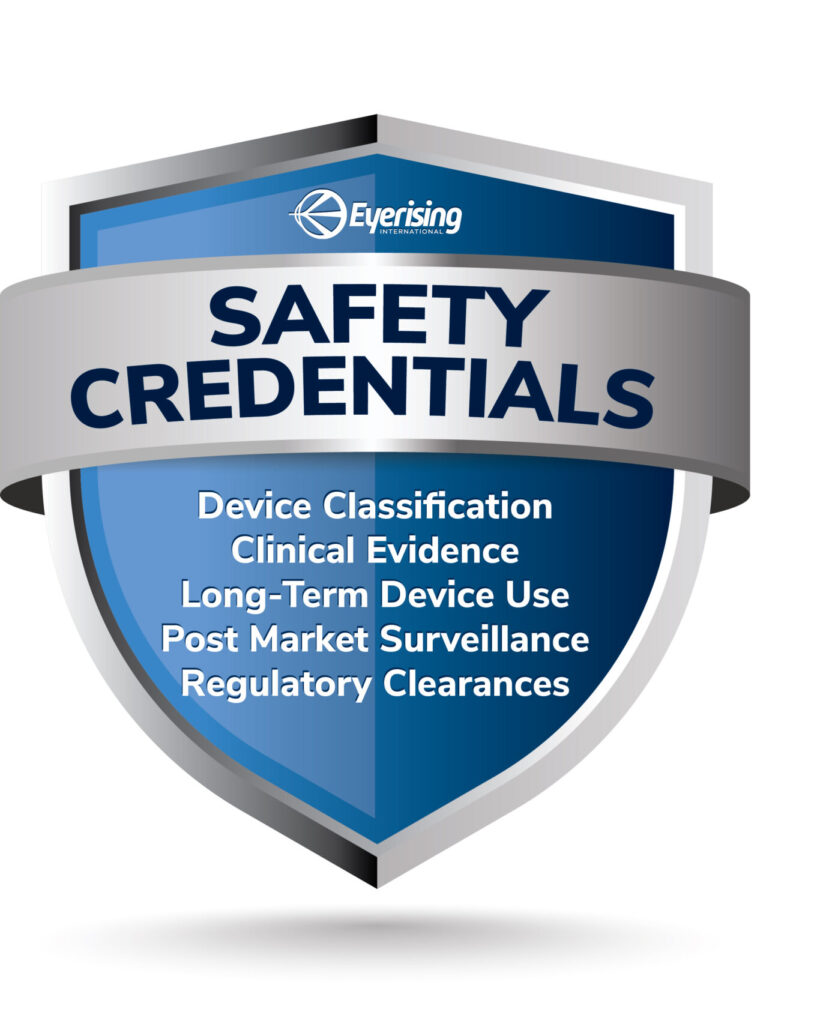
Group 1 instrument
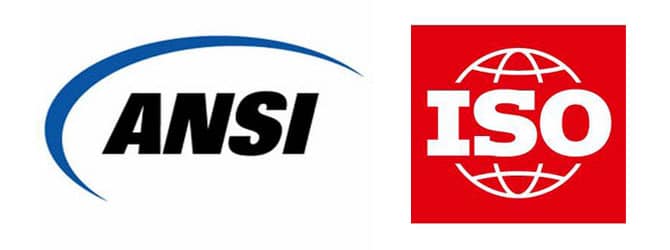
Clinical trials and real-world studies



(with promising interim results from ongoing multi-ethnic studies as to the efficacy and safety of our device)
4 Years off label
4 Years off label
Global monitoring in place

7x Class II regulatory clearances held following extensive risk-benefit analyses by the competent regulatory bodies

The Eyerising Myopia Management Device has been classified as a Group 1 instrument by the American National Standard for the Safe Use of Lasers (ANSI) Z80.36-2021 testing standards. This is the appropriate standard for ophthalmic instrument testing as per FDA requirements. Our Group 1 classification confirms that no potential light hazard exists when using our device. Our company, Eyerising International, is also ISO 13485:2016 certified by notified body BSI.
Our device has undergone extensive clinical study, with 10 clinical trials and 4 real-world studies published in China. This brings us to a cumulative sample size of 1785 patients across our published work who have been using our RLRL therapy for a total of 9.25 years. We also have 4 ongoing clinical trials and real-world studies outside of China to confirm our multi-ethnic efficacy, with promising interim results from our Australian trial speaking to the continued efficacy and safety of our device. Importantly, in all our published studies thus far across a variety of institutions, zero significant adverse events have been reported.
The device has been in the market for over 8 years and is the originator and patent holder of RLRL therapy for myopia management. This comprises 4 years of off-label and 4 years of on-label use, thereby providing ample data on its safety over several years of real-world usage.
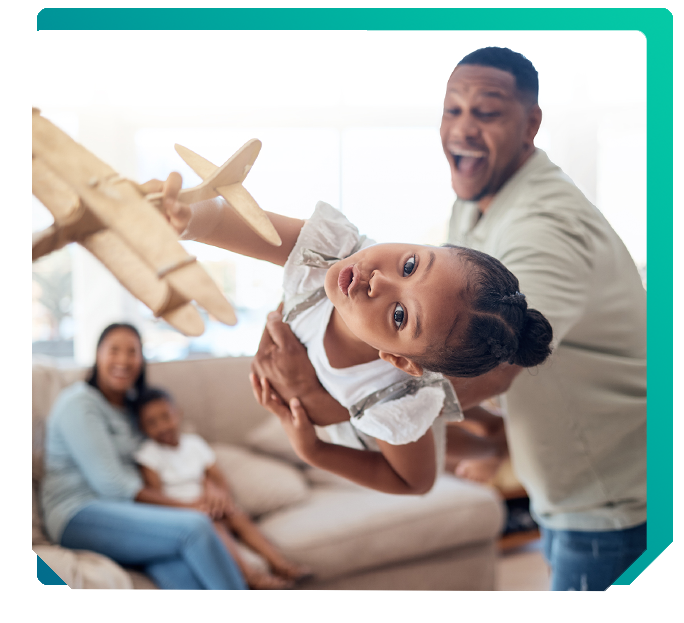
We also have global monitoring in place for our current users, in order to continually confirm our device’s safety. To date, we have over 160,000+ patients that have used the device with 80,000+ current users. In this time, there have been 5 significant adverse events reported during our post-market surveillance. Adverse events are difficult to avoid when launching novel medical devices, and our limited number of adverse events reported within our wealth of real-world experience speaks to the overall safety of our intervention, as well as our commitment to fully updating our risk profile and instructions for use accordingly. OF note, all patients fully recovered with no permanently sustained injuries.
The Eyerising Myopia Management Device holds 7 Class II regulatory clearances in different international markets. This includes CFDA approval in China (Class II), MHRA approval in the United Kingdom (Class IIa), TGA approval in Australia (Class IIa), CE certification in Europe (Class IIa), MedSafe approval in New Zealand (Class IIa), MDA approval in Malaysia (Class B) and TMMDA approval in Turkey (Class IIa). Each of these clearances was granted following extensive risk-benefit analyses by the competent regulatory bodies, where it was deemed our extensive clinical and real-world evidence successfully demonstrated that the benefits of RLRL therapy outweigh the risks. We are also working on launching in several new international markets in due course.
Rigorous product testing and safety assessment has been undertaken on our device. The testing process was conducted in accordance with the ANSI Z80.36-2021 standard, ensuring that our device meets the latest safety requirements and guidelines. The testing report was issued on 08 January 2023 and provides assurance of our commitment to delivering a safe and effective solution for managing myopia.
The ANSI Z80.36-2021 standard was developed by the American National Standards Institute (ANSI) that specifically addresses the safety requirements for ophthalmic instruments that that direct optical radiation into or at the eye. The standard focuses on the potential light hazard of these instruments when used in the field of optometry and ophthalmology. For the purpose of this standard, ophthalmic instruments are categorized into two groups to differentiate instruments that may pose potential hazards from those that do not.
Our device was tested by Laser Product Safety, LLC (who is authorised by the FDA ASCA-accredited testing lab, CertifiGroup in accordance to ANSI Ophthalmic – Light Hazard Protection For Ophthalmic Instruments standard). The device has successfully achieved a Group 1 instrument classification (Figure 1), indicating no potential light hazard exists.
At Eyerising International Pty Ltd, we are dedicated to revolutionizing eye care through our cutting-edge ophthalmic RLRL myopia therapy. Our commitment to safety, efficacy, and patient well-being drives us to develop exceptional products that consistently meet and surpass the highest industry standards.
To request the full report, please contact on us: [email protected]
The device meets the quality, safety, and efficacy standards required by medical regulators in over 30 countries across Europe and Australasia, with many more coming soon.
RLRL therapy’s efficacy and safety has been validated through a comprehensive ongoing clinical trial program. The results, published in leading peer-reviewed scientific publications show that controlled exposure to the Eyerising Myopia Management Device RLRL therapy can control the progression of myopia. By improving the metabolic rate and blood flow of the surrounding structure of the eye, we can strengthen it and control the growth of the eye’s axial length.
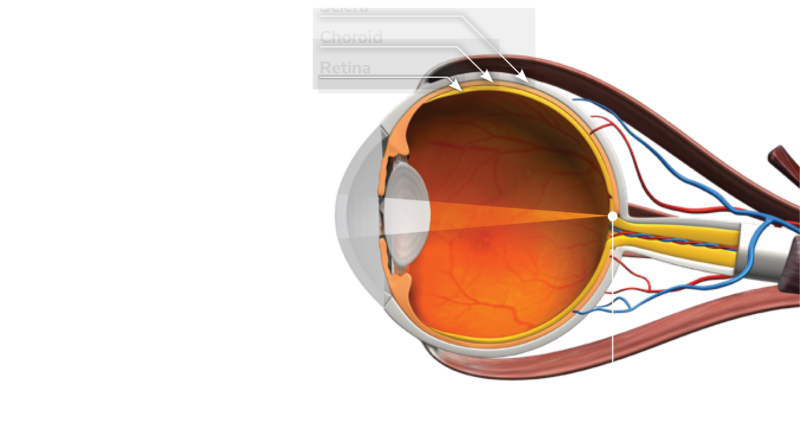
In a normal eye, light passes through the lens with the focal point correctly reaching the retina.
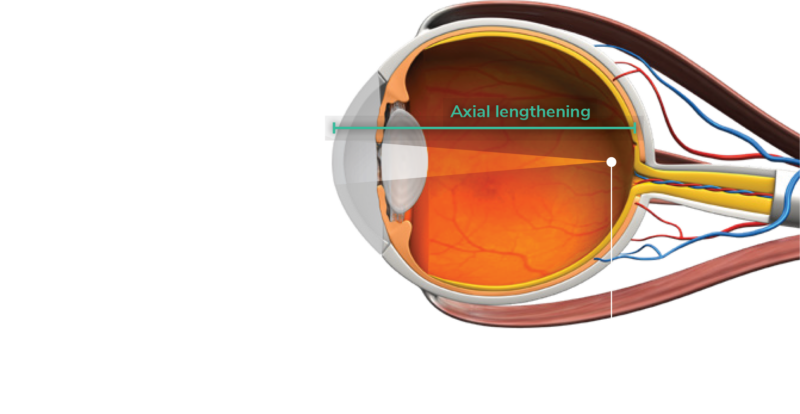
As myopia progresses, axial lengthening and focal point mis-alignment increase. Continued axial lengthening and focal point misalignment leads to high myopia.
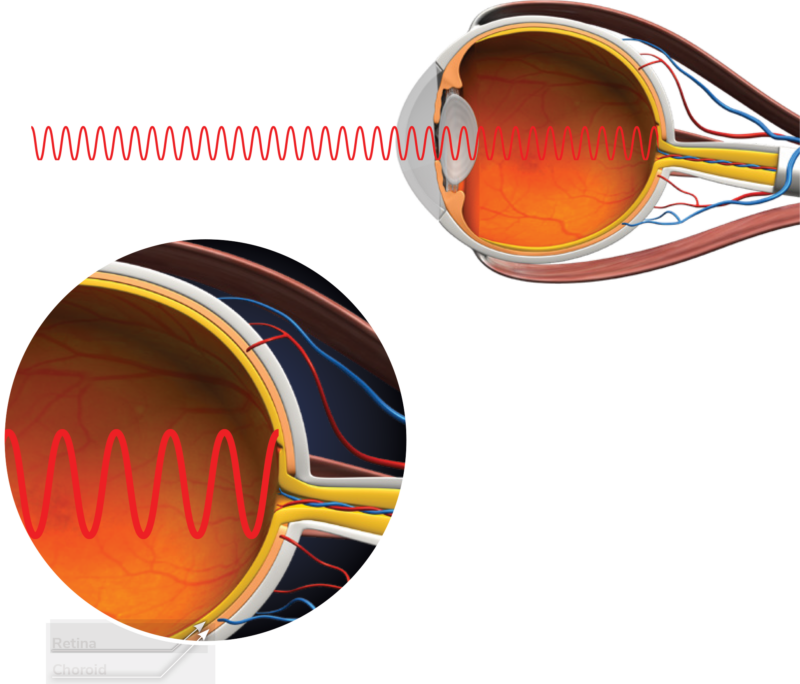
The device delivers Repeated Low-Level Red-Light therapy to the ocular fundus.
Blood flow is stimulated and increases to rethicken the choroid layer to help slow the axial length’s further elongation and control myopia’s progression.
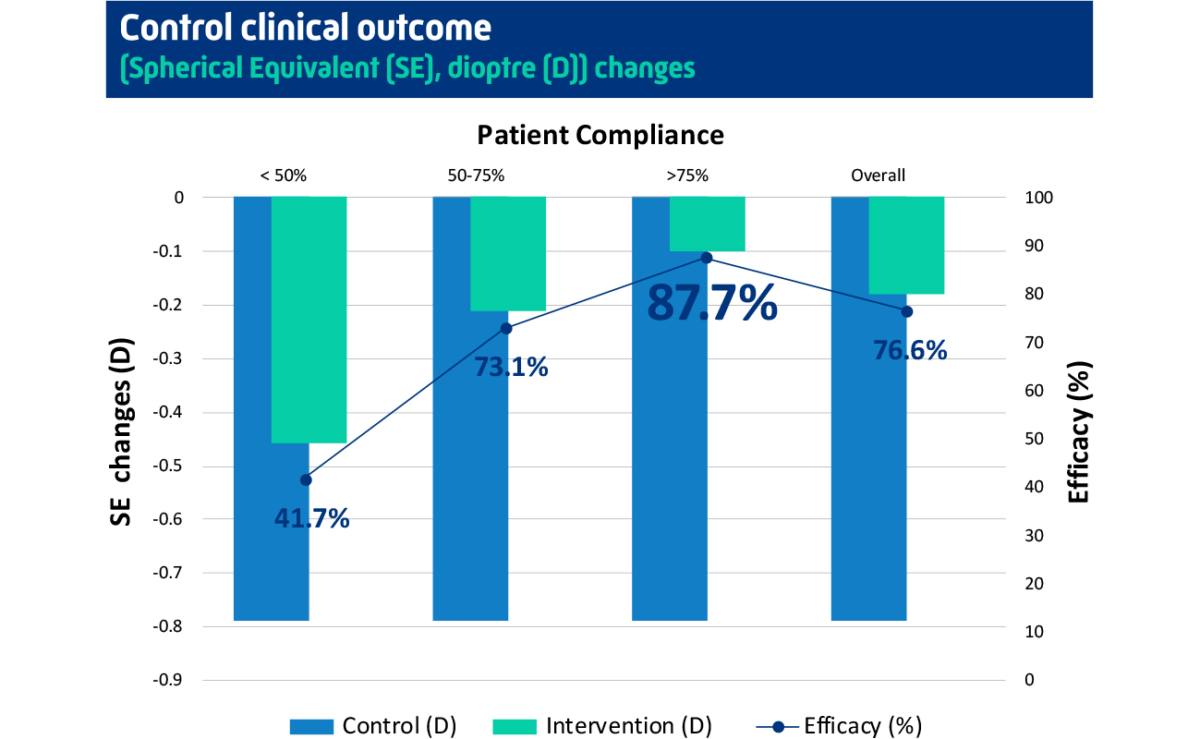
An extensive clinical trial program has established the impressive effectiveness and safety of using Repeated Low-Level Red-Light (RLRL) therapy and the Eyerising Myopia Management Device for the treatment of myopia. In addition to the six peer-reviewed clinical papers located in the Science Hub, there are currently multi-ethnic clinical trials underway in Australia and the USA and high and adult myopia clinical trials underway in Japan.
At the end of this study, the participants were invited to enrol in a follow-up study for a further 12 months.2 Those children who continued with RLRL therapy had a 75% reduction in myopia progression, and those who switched to RLRL therapy in the second year had a 31% reduction in myopia progression when compared with those children who stayed with SVS. Visual acuity remained the same with no known side effects or severe adverse events.
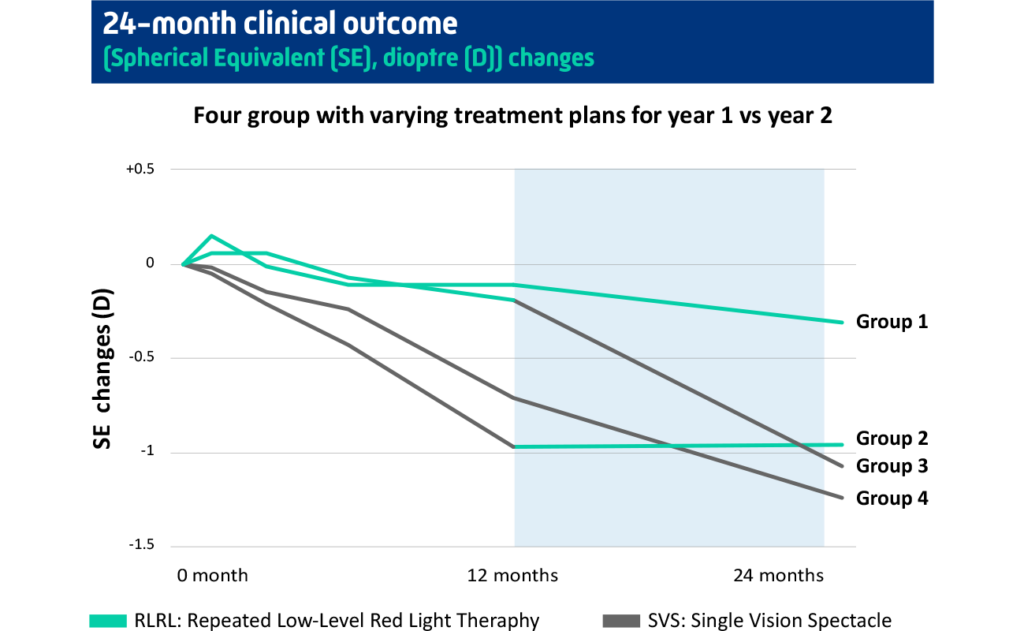
Overall, children in the RLRL-plus-spectacles group had a 76.6% reduction in myopia progression compared with children in the single vision spectacles-only group (SVS). There was an 87.7% reduction in children who had high compliance with the treatment schedule (>75%). There were no known significant side effects, and the overall, the treatment was well tolerated by the children participating in the trial.
Eyerising International is represented in Malaysia by Aionlabs Sdn Bhd, an authorised distributor of medical and pharmaceutical products.
Copyright © 2024 Eyerising®. All rights reserved.